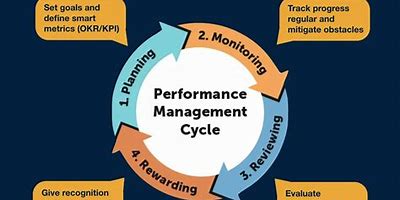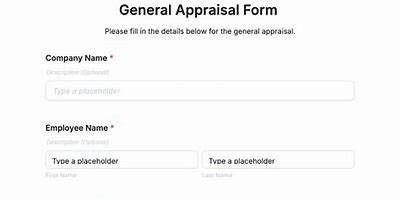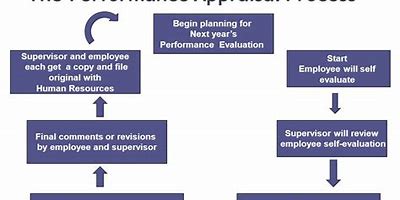
Performance appraisal forms are crucial tools in the management of human resources, providing a structured way to evaluate employee performance, identify areas for improvement, and facilitate constructive feedback. The effectiveness of these forms hinges on their design and content, which must be tailored to the specific needs and goals of the organization. A well-designed appraisal form not only helps in objectively assessing an employee’s contributions but also serves as a roadmap for future development and career progression. Choosing the right performance appraisal form can be a game-changer for companies looking to cultivate a high-performing workforce. The ideal form should align with the company’s values, objectives, and performance metrics, ensuring that the appraisal process is both relevant and meaningful. Furthermore, it should be user-friendly, easy to understand, and capable of capturing the nuances of individual performance. In this article, we will explore various types of performance appraisal forms, their key components, and best practices for selecting and implementing them effectively.
WATCH
Understanding the Purpose of Performance Appraisal Forms

The primary purpose of a performance appraisal form is to provide a standardized and structured way to evaluate an employee's job performance over a specific period. This evaluation serves multiple critical functions within an organization. First, it helps in identifying high-performing employees who deserve recognition and rewards. Second, it pinpoints areas where employees may be struggling and require additional training or support. Third, it facilitates open communication between managers and employees, fostering a culture of continuous improvement and professional development. Finally, the appraisal process provides valuable data for making informed decisions about promotions, compensation adjustments, and even terminations if necessary. Therefore, a well-designed performance appraisal form is an essential tool for effective performance management.
WATCH
Key Components of an Effective Appraisal Form

An effective performance appraisal form typically includes several key components that work together to provide a comprehensive evaluation of an employee's performance. These components may include:
Employee Information: Basic details such as name, job title, department, and evaluation period.
Job Responsibilities and Objectives: A clear outline of the employee's primary duties and goals, against which their performance will be measured.
Performance Criteria: Specific metrics or standards used to assess the employee's performance in various areas, such as quality of work, productivity, teamwork, and problem-solving skills.
Rating Scales: A standardized scale (e.g., numerical, descriptive, or behavioral) used to evaluate the employee's performance against each criterion.
Comments Section: Space for the manager to provide specific feedback, examples, and observations related to the employee's performance.
Employee Self-Assessment: An opportunity for the employee to reflect on their own performance, highlight accomplishments, and identify areas for improvement.
Goals for the Next Period: A section to outline specific, measurable, achievable, relevant, and time-bound (SMART) goals for the employee to focus on in the coming months.
Signatures: Spaces for both the manager and employee to sign and date the form, indicating that they have reviewed and discussed the evaluation.
These components ensure that the
appraisal process is thorough, objective, and focused on continuous improvement.
WATCH
Types of Performance Appraisal Forms

There are several types of performance appraisal forms, each with its own strengths and weaknesses. The choice of which type to use depends on the organization's culture, objectives, and the nature of the jobs being evaluated. Some common types include:
Traditional Rating Scales: These forms use numerical or descriptive scales to rate employees on various performance criteria. They are relatively simple to use but may lack nuance and specificity.
Behaviorally Anchored Rating Scales (BARS): BARS forms provide specific examples of behavior associated with different performance levels, making the evaluation process more objective and consistent.
360-Degree Feedback: These forms gather feedback from multiple sources, including supervisors, peers, subordinates, and even customers. This provides a more comprehensive and well-rounded view of the employee's performance.
Self-Assessments: These forms allow employees to evaluate their own performance, providing valuable insights and promoting self-awareness.
Narrative Appraisals: These forms rely on written descriptions of the employee's performance, rather than numerical ratings. They can provide more detailed and personalized feedback but may be more time-consuming to complete.
Each type of form has its own advantages and disadvantages, and organizations should carefully consider their needs and goals when selecting the most appropriate type.
WATCH
Designing a Customized Appraisal Form

While many standard appraisal form templates are available, organizations may find it beneficial to design a customized form that aligns with their specific needs and objectives. When designing a customized form, consider the following steps:
Identify Key Performance Indicators (KPIs): Determine the most important metrics for measuring employee success in each role.
Define Performance Criteria: Develop clear and specific criteria for evaluating performance in each area, based on the identified KPIs.
Choose a Rating Scale: Select a rating scale that is appropriate for the type of performance being measured and that provides sufficient granularity.
Incorporate Behavioral Examples: Include examples of specific behaviors that demonstrate different performance levels, making the evaluation process more objective.
Provide Space for Feedback: Ensure that there is ample space for managers to provide specific and constructive feedback, as well as for employees to self-assess and set goals.
Test and Refine: Pilot the customized form with a small group of employees and managers to gather feedback and make any necessary adjustments.
By following these steps, organizations can create an appraisal form that is tailored to their unique needs and that effectively promotes performance improvement and employee development.
WATCH
Best Practices for Implementing Performance Appraisals

The effectiveness of performance appraisals depends not only on the design of the form but also on the way they are implemented. To ensure that the appraisal process is fair, objective, and beneficial, consider the following best practices:
Provide Training: Train managers on how to conduct effective appraisals, including how to provide constructive feedback, set SMART goals, and address performance issues.
Communicate Expectations: Clearly communicate performance expectations and criteria to employees at the beginning of the evaluation period.
Gather Data Regularly: Don't wait until the formal appraisal to gather feedback on employee performance. Regularly observe and document performance throughout the year.
Provide Timely Feedback: Provide feedback to employees on a regular basis, not just during the formal appraisal. This allows employees to make adjustments and improve their performance in real-time.
Focus on Development: Use the appraisal process as an opportunity to identify areas for employee development and to create a plan for improvement.
Ensure Fairness and Objectivity: Strive to be fair and objective in your evaluations, avoiding bias and focusing on observable behaviors and results.
Follow Up: After the appraisal, follow up with employees to ensure that they are making progress on their goals and to provide ongoing support.
By following these best practices, organizations can create a performance appraisal process that is both effective and motivating.
WATCH
The Role of Technology in Performance Appraisals

Technology plays an increasingly important role in performance appraisals, with many organizations using software and online platforms to streamline the process. These tools can automate many of the administrative tasks associated with appraisals, such as scheduling reviews, tracking progress, and generating reports. They can also provide access to a wide range of performance data, making it easier to identify trends and patterns. Furthermore, technology can facilitate more frequent and timely feedback, as well as enable employees to track their own progress and set goals. When selecting a performance appraisal software, consider the following features:
Customizable Forms: The ability to create customized appraisal forms that align with your organization's specific needs.
Automated Workflows: Automated workflows for scheduling reviews, sending reminders, and tracking progress.
Performance Tracking: Tools for tracking employee performance data, such as goals, achievements, and feedback.
Reporting and Analytics: Reporting and analytics capabilities to identify trends and patterns in performance data.
Integration with Other HR Systems: Integration with other HR systems, such as payroll and HRIS.
By leveraging technology, organizations can make the performance appraisal process more efficient, effective, and engaging.
WATCH
Common Pitfalls to Avoid in Performance Appraisals
Even with a well-designed appraisal form and a robust process, there are several common pitfalls that organizations should avoid:
Halo Effect: Allowing one positive attribute to influence the entire evaluation.
Horns Effect: Allowing one negative attribute to influence the entire evaluation.
Recency Bias: Focusing only on recent performance and ignoring performance from earlier in the evaluation period.
Leniency Bias: Giving consistently high ratings to avoid conflict.
Strictness Bias: Giving consistently low ratings.
Central Tendency Bias: Rating all employees as average, regardless of their actual performance.
Personal Bias: Allowing personal feelings or prejudices to influence the evaluation.
To avoid these pitfalls, managers should be trained to be aware of these biases and to focus on objective, observable behaviors and results.
WATCH
Legal Considerations in Performance Appraisals
Performance appraisals can have significant legal implications, particularly in cases of termination or discrimination. To minimize legal risks, organizations should ensure that their appraisal process is fair, objective, and non-discriminatory. Some key legal considerations include:
Job-Relatedness: Ensure that the performance criteria are job-related and based on legitimate business needs.
Consistency: Apply the appraisal process consistently to all employees in similar roles.
Documentation: Maintain accurate and detailed documentation of performance issues and feedback.
Due Process: Provide employees with an opportunity to respond to negative evaluations and to challenge the results.
Non-Discrimination: Ensure that the appraisal process is free from discrimination based on race, gender, age, religion, or other protected characteristics.
Consult with legal counsel to ensure that your performance appraisal process complies with all applicable laws and regulations.
WATCH
In conclusion, selecting the best performance appraisal form involves careful consideration of your organization's needs, objectives, and culture. By understanding the purpose of appraisal forms, their key components, and the various types available, you can choose a form that effectively promotes performance improvement and employee development. Remember to design a customized form that aligns with your specific requirements and to implement the appraisal process in a fair, objective, and legally compliant manner. Technology can play a valuable role in streamlining the appraisal process, but it is important to be aware of common pitfalls and to take steps to avoid them. With the right approach, performance appraisals can be a powerful tool for driving organizational success and fostering a high-performing workforce. Don't forget the importance of evaluation, feedback, and continuous improvement in the appraisal process to achieve optimal results. Effective use of the performance review is also critical for employee growth. Good management ensures a well-structured and beneficial assessment process.
WATCH
Post a Comment for "Best Performance Appraisal Form Pdf"